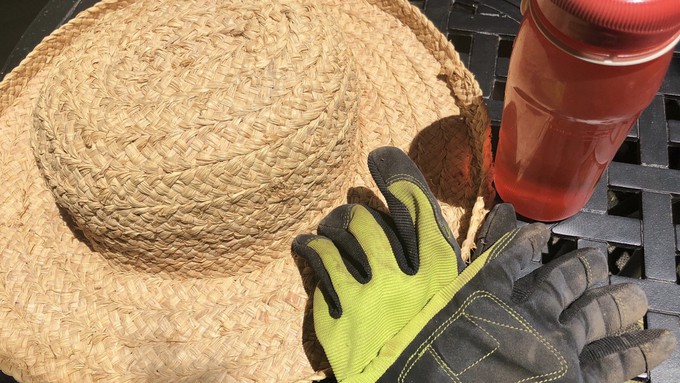
National Weather Service warns people to stay indoors

If you do have to be in the garden the next few days, make it as early in the day as possible. Wear a hat and drink plenty of water -- then scurry indoors. Kathy Morrison
“Heat like this is rare and can be deadly,” the Sacramento NWS office tweeted Monday morning. “Entire population is at risk.”
With more triple-digit days on the way, the weather service’s excessive-heat warning has been extended through 8 p.m. Thursday.
After a balmy night in the high 70s, Monday started hot and got hotter. By 10 a.m., temperatures were already in the high 80s and headed north of 110.
“Labor Day will be very hot across interior #NorCal as the current heatwave cranks up another notch!” tweeted the weather service. “Most of the Central Valley is expected to see high temperatures above 110 degrees this afternoon. Practice heat safety!”
This string of extremes is unusual, added the weather service. “How significant is this September Heatwave? Several high and warm low temperature records could be broken, as well as the number of 100° and 110° days in a calendar year,” it tweeted.
On Monday, the weather service estimated that Downtown Sacramento had an 80% chance of breaking September’s all-time record of 109 degrees. That mark was tied on Labor Day 2020. Local predictions ranged from 110 to 112 degrees.
But the heat doesn’t stop there. The weather service says there’s an almost 1 in 4 chance – 24% – that Downtown Sacramento hits its all-time record high temperature of 114 degree on Tuesday; maybe not break it, but match it. Ouch!
“A prolonged period of dangerous heat is expected across interior NorCal this week (during this) excessive heat event,” the weather service says. “Everyone is at risk for heat-related illnesses if precautions are not taken. Drink plenty of water, seek air conditioning, and avoid spending time outdoors.”
No matter how much we want to go out and work in our gardens, now is not the time. Water as early as possible. Harvest anything that’s close to ripe. Then, retreat to some space in front of a fan. Show your houseplants some TLC.
Fortunately, the “heat dome” causing this triple-digit spree can’t stay there forever. The weather service expects temperatures to cool back to normal – 91 degrees – by Sunday.
For more on Sacramento weather: https://www.weather.gov/sto/
Comments
0 comments have been posted.Sacramento Digs Gardening to your inbox.
Food in My Back Yard Series
May 6: Maintain soil moisture with mulch for garden success
April 29: What's (already) wrong with my tomato plants?
April 22: Should you stock up on fertilizer? (Yes!)
April 15: Grow culinary herbs in containers
April 8: When to plant summer vegetables
April 1: Don't be fooled by these garden myths
March 25: Fertilizer tips: How to 'feed' your vegetables for healthy growth
March 18: Time to give vegetable seedlings some more space
March 11: Ways to win the fight against weeds
March 4: Potatoes from the garden
Feb. 25: Plant a fruit tree now -- for later
Feb. 18: How to squeeze more food into less space
Feb. 11: When to plant? Consider staggering your transplants
Feb. 4: Starting in seed starting
Sites We Like
Garden Checklist for week of May 4
Enjoy this spring weather – and get gardening!
* Plant, plant, plant! It’s prime planting season in the Sacramento area. Time to set out those tomato transplants along with peppers and eggplants. Pinch off any flowers on new transplants to make them concentrate on establishing roots instead of setting premature fruit.
* Direct-seed melons, cucumbers, summer squash, corn, radishes, pumpkins and annual herbs such as basil.
* Harvest cabbage, lettuce, peas and green onions.
* In the flower garden, direct-seed sunflowers, cosmos, salvia, zinnias, marigolds, celosia and asters. (You also can transplant seedlings for many of the same flowers.)
* Plant dahlia tubers. Other perennials to set out include verbena, coreopsis, coneflower and astilbe.
* Transplant petunias, marigolds and perennial flowers such as astilbe, columbine, coneflowers, coreopsis, dahlias, rudbeckia and verbena.
* Keep an eye out for slugs, snails, earwigs and aphids that want to dine on tender new growth.
* Feed summer bloomers with a balanced fertilizer.
* For continued bloom, cut off spent flowers on roses as well as other flowering plants.
* Add mulch to the garden to maintain moisture. Mulch also cuts down on weeds. But don’t let it mound around the stems or trunks of trees or shrubs. Leave about a 6-inch to 1-foot circle to avoid crown rot or other problems.